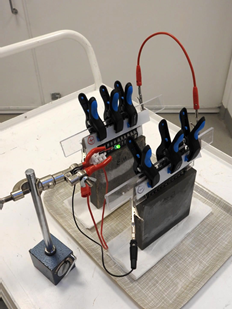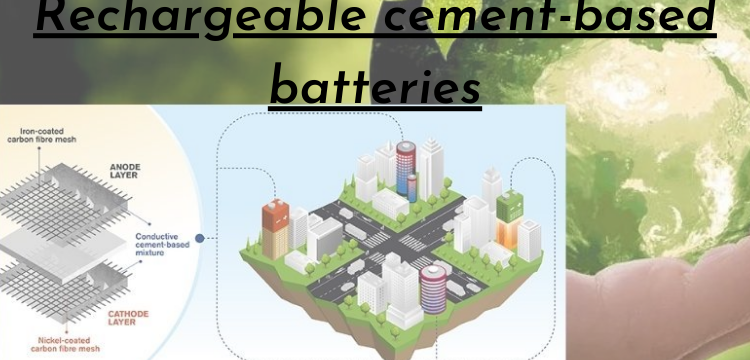Rechargeable cement-based batteries
Consider a twenty-story concrete structure capable of storing electricity in the manner of a giant battery. Due to pioneering research at Chalmers University of Technology in Sweden, such a vision could become a reality someday. Recent research from the Department of Architecture and Civil Engineering outlines a novel idea for rechargeable batteries made of cement.

The ever-increasing need for environmentally friendly construction materials presents significant obstacles for researchers. Emma Zhang, formerly of Chalmers University of Technology in Sweden, joined Professor Luping Tang’s research group many years ago to investigate the potential construction materials. They have now developed a world-first prototype for a rechargeable cement-based battery in collaboration.
The concept begins with a cement-based mixture that has been enhanced with small quantities of short carbon fibers to improve conductivity and flexural durability. The combination is then embedded with a metal-coated carbon fiber mesh containing iron for the anode and nickel for the cathode. This is the prototype that the researchers are presenting now, after extensive experiments.
“Due to the fact that previous experiments studying concrete battery manufacturing demonstrated extremely poor efficiency, we realized we needed to think outside the box and develop a new method of producing the electrode. This particular concept – which is also rechargeable – has never been discussed before. We now have proof of principle at the laboratory scale “Emma Zhang elaborates.
The study of Luping Tang and Emma Zhang resulted in the creation of a rechargeable cement-based battery with an average energy density of 7 Watthours per square meter (or 0.8 Watthours per litre). The energy density of a battery is used to express its power, and a conservative calculation suggests that the current Chalmers battery could work more than tenfold better than previous attempts at concrete batteries. Although the energy capacity is still poor in contrast to industrial batteries, this drawback can be overcome when the battery is installed in houses.
A possible solution to energy storage problems
The fact that the battery is rechargeable is the most significant feature, and the possibilities for use are almost limitless if the technology is further refined and commercialized.
Energy conservation is a self-evident possibility, as is surveillance. The researchers envision a variety of uses, including powering LEDs, providing 4G connectivity in rural areas, and providing cathodic protection for concrete infrastructure against corrosion.
“It may also be combined with solar cell panels to generate electricity and serve as the energy source for highway or bridge monitoring systems, where sensors powered by a concrete battery could detect cracking or corrosion,” Emma Zhang suggests.
The idea of using infrastructure and buildings in this manner has the potential to be innovative, since it would provide an alternative approach to the energy shortage by storing a significant amount of energy.
Concrete is the most widely used construction material on the planet. It is made by combining cement with other materials. It is far from optimal from a sustainability standpoint, but the possibility of adding features could add a different layer. Emma Zhang adds: “We see a world in which this invention enables the construction of whole portions of multi-story buildings out of usable concrete. Given that a coating of this electrode may be inserted in every concrete wall, we’re talking about immense amounts of usable concrete.”
Concerns over service-life continue to exist
The concept is still in its infancy. The technological issues that must be resolved before commercialization of the technique can occur include expanding the battery’s service life and developing recycling strategies. ” Given that concrete infrastructure is typically designed to last fifty or even a hundred years, batteries will need to be refined to match this lifespan or to be more easily exchanged and recycled after their useful life has expired. For the time being, this presents a significant technological problem “Emma Zhang explains.
However, the researchers believe their innovation has a lot to give. “We are persuaded that this principle contributes significantly to the possibility of potential construction materials incorporating additional functions such as clean energy sources,” Luping Tang concludes.
Source: Materials
